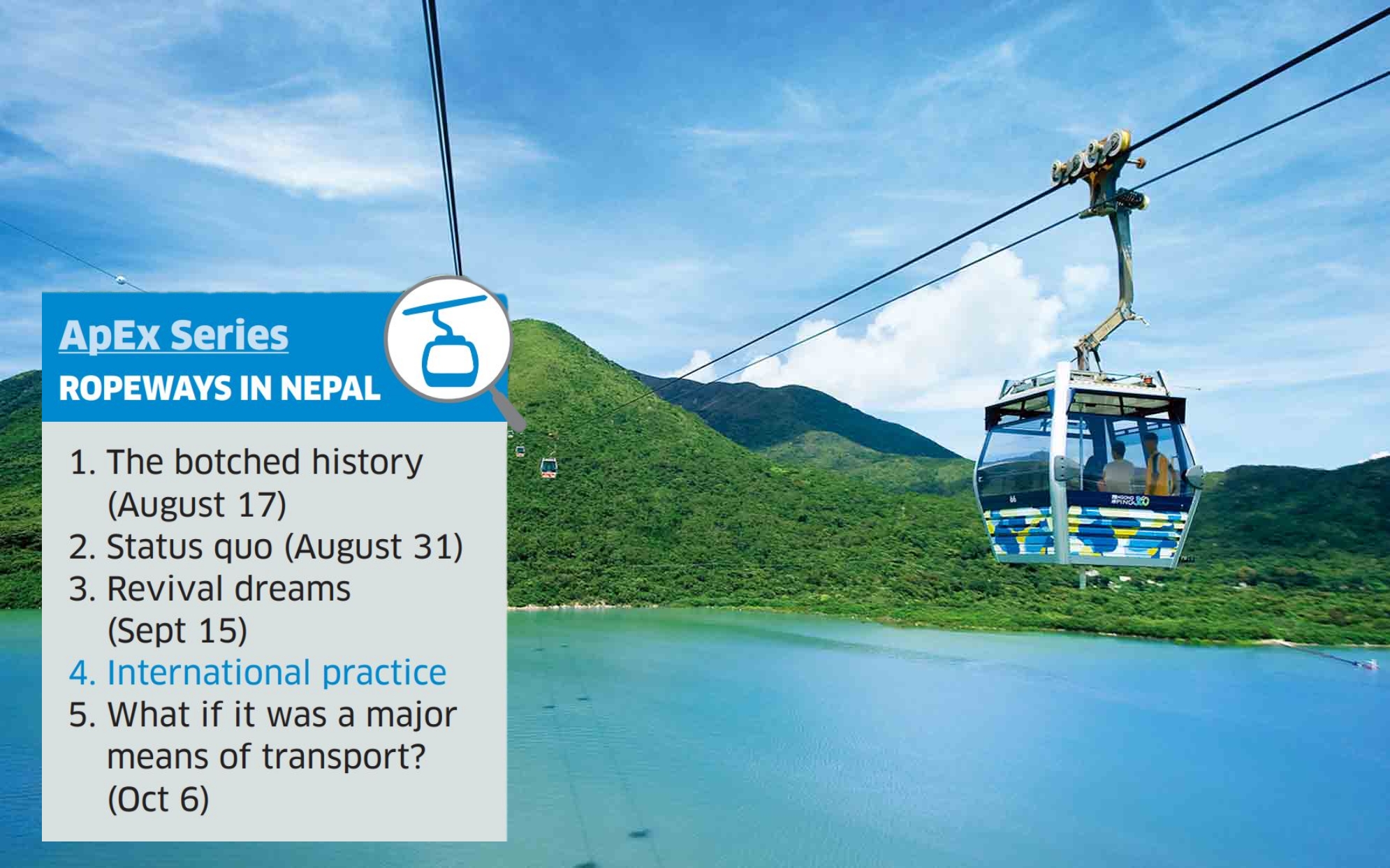When Bir Bahadur Ghale, a local of Barpak village in Gorkha, went to Hong Kong in 1986, he was fascinated by the cable cars he saw there. They were a convenient way of transporting goods and people in hill areas. Ghale returned home with the dream of building a ropeway in his village. His dream came true in 1998 when the British Embassy in Kathmandu in cooperation with the Intermediate Technology Development Group (ITDG-Nepal) agreed to help with a goods-carrying ropeway in Barpak.
The ropeway connected Rangrung and Barpak—villages separated by a two-day hike—and had an immediate impact on the people and the local economy. Every day, three tons of goods were transported to Barpak. The ropeway made an average of 20 trips a day between 10 am to 5 pm and generated an average daily gross income of Rs 1,500. In the book, ‘Ropeways in Nepal,’ Ghale mentions that the selling price of transported goods dropped by Rs 2-3 a kg (and even more) after the ropeway came into operation.
The neighboring villages of Laprak and Gumda also benefited from the ropeway. But the ropeway was shut down just four months into its operation after four people riding in the goods carriage died when the ropeway’s hauling cable snapped.
Also read: Nepal’s most iconic ropeways—now abandoned
Ghale says the ropeway was not meant for transporting passengers but the villagers did not listen. Over the years, Nepal has seen many ropeway systems fall out of favor or discontinued, even though they have a great potential. Hong Kong and Switzerland are two fine examples where ropeways are being used as a form of transport in challenging topography where building roads is expensive and fraught with risks. Venezuela, Canada, Bolivia, China, Malaysia, Brazil, and the European countries have set world records on ropeways with their technology and service. Nepal can learn a lot from these countries and become less ‘road-obsessed’ and employing more practical solutions to transport and travel.
Toni Hagen, renowned Swiss geologist and an expert in Nepal’s geology, mentions in ‘Ropeways in Nepal’ how Nepal could learn from Swiss ropeway. After obtaining independence from colonial rule, he writes most developing countries embarked on a single-focus program of road construction without considering more economic alternatives. Switzerland, on the other hand, modernized its transportation system using a mix of railways, roads, and ropeways.
Also read: High in potential, low in execution
Its balanced policy fostered the development of a judicious blend of transport technologies suitable to specific areas in the Swiss Alps and meeting economic requirements. The Swiss Alps have historically been a formidable barrier to transport. The building of trails across the mountains to facilitate the transport of pack animals started in the 13th century, when Swiss democracy began, although some trails must have existed much earlier, in Roman times.
“Nepal could learn much not only from its example but also from the examples of other mountain-blessed countries that have promoted the development of ropeways,” writes Hagen. But barring some ropeway and cable car projects, all of them privately launched, Nepal government has never seriously considered the form of transport that could not only save the cost of expensive road projects in the hill and mountain areas, but also spur economic activities in remote hinterlands. Building ropeways can also be a way to promote tourism in Nepal.
Also read: Is ropeway revival possible?
In Australia, for instance, a ropeway has been opened that crosses scenic coral reefs, tropical forests and mountains to end at a fashionable hill resort that has no access road. Malaysia, too, has several scenic tourist ropeways to reach resort centers on mountaintops that are not served by access roads. In the Kathmandu Valley, aerial ropeways could start at the outskirts of town, at the Ring Road encircling Kathmandu. These ropeways could also promote treks of one or two days in the beautiful hills around the outer rim of the Kathmandu Valley.
The great potential for establishing hotels in the Kathmandu Valley has so far been unexploited, but Nepal, like Switzerland and Hong Kong, has spectacular aerial ropeway rides to offer. On all continents, fruit plantations, mining enterprises, and many other industries use a great number of ropeways to transport goods. But Nepal lags behind in this front. The development of transport in Nepal has been quite different. Major highways are built and even repaired by foreign contractors. If national contractors are involved, they are mostly Kathmandu-based. Even to construct remote feeder roads in the districts, central agencies such as the Department of Roads (DoR) are involved.
Moreover, the roads are in notoriously bad shape. Ropeway experts say Nepal has great potential for opening up its poor but beautiful hinterlands to international tourists, yet roads are the only way to get there. They say the construction of roads without attention to protecting the environment ruins beautiful scenery. “If Nepal had hired experts in destroying unique tourist sites and mountain scenes, they could not have done better,” Hagen writes in the book to make his case for ropeways in Nepal.
A study suggests that building ropeways is six times cheaper than roadways. The cost of maintenance is also minimal. Yet, the government is reluctant about this mode of transport. There is no government agency for ropeway promotion. To build a ropeway, one is put through a series of approval process and bureaucratic rigmarole. To install a ropeway for people transport in Nepal, an investor has to get approval from 21 different government authorities. Reports suggest that the country could have ropeways in nearly 2,000 areas. But only five ropeways for human transport and almost a dozen gravity goods ropeways are currently in operation.













